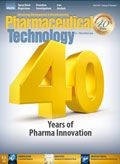Perspective: Big Pharma No Longer the Center of Innovation
Regulations and business changes have altered Big Pharma’s place in the industry.
Chris Moreton

Chris Moreton, PhD, partner at FinnBrit Consulting and a member of PharmTech’s Editorial Advisory Board, discusses how the role of Big Pharma has changed over the years and the positive effects of regulations.
Pharma industry advancements
PharmTech: During your 40 years in the pharmaceutical industry, how has it evolved? What advances have been made? What were some factors that hindered advances?
Moreton: Industry has evolved in several ways. For example, in the early 1970s, Big Pharma was the center for drug discovery and innovation. That is no longer the case, and it can be argued that Big Pharma companies today are more centers of marketing and sales than drug discovery. The centers of drug discovery are increasingly in universities and smaller start-ups.
There have been many advances, including:
- Better understanding of drug interaction with receptors
- Better analytical methods (e.g., the introduction of high-performance liquid chromatography, better spectroscopic methods, hyphenated methods, etc.)
- Combinatorial chemistry
- High-throughput screening
- Recombinant DNA technology and other biotechnology tools
- Better understanding of drug absorption and efflux
- Better understanding of drug safety
- Methods to allow the formulation of poorly water soluble drugs
- Drugs commercially available today can save lives, improve patients’ quality of life, and allow them to lead more productive lives.
- Regulatory sciences.
I am not sure there have been many factors that have hindered medical advances, apart from arrogance on the part of certain individuals. For example, company executives who have ignored requests from FDA to undertake clinical studies in a certain way, and then complain because their new drug applications were not accepted.
PharmTech: What are the top three innovations that have changed the industry the most over the past 40 years and why?
Moreton: My top three would be:
- The advent of biotechnology-derived drugs
- Better understanding of drug delivery for all types of drug molecules and routes of administration
- The introduction of better analytical methods because these methods have allowed us to investigate and monitor materials and processes in ways that have allowed us to see deeper into mechanisms and organism.
PharmTech: How have regulations and standards advanced or hindered advances?
Moreton: I do not believe that regulations have hindered advances. They may have hindered less scrupulous promotion of certain drug products, and they may have prevented dangerous or inadequately effective medicines from getting to market, but I regard those as pluses.
I think the regulations have actually saved lives, and promoted better research and testing.
The future of Pharma
PharmTech: What do you foresee for the next 10 years in pharma innovations, regulations, and/or markets?
Moreton: I think we will see oral delivery of peptide drugs, and this will open new areas of opportunity for the development of new treatments for diseases. We will likely see even more consolidation in all branches of the pharmaceutical sector. There will also be an accompanying further shift of drug discovery to smaller organizations with a concomitant growth in the contract sectors.
I think we may also see skills shortages in some areas as older people retire and there is no succession planning. Younger people are not able to get the training today that was available to me 45 years ago. Training is being increasingly cut back in all organizations.
Chris Moreton has been a member of Pharmaceutical Technology’s Editorial Advisory Board since 2003.
Article Details
Pharmaceutical Technology
Vol. 41, No. 7
Page: 24
Citation
When referring to this article, please cite it as PharmTech, “Perspective: Big Pharma No Longer the Center of Innovation,” Pharmaceutical Technology 41 (7) 2017.

PacBio Chosen as Tech Partner for Global Alzheimer’s Disease Research Project
April 23rd 2025The project, the North African Dementia Registry, will unite multiple entities for the purpose of developing a comprehensive dataset to advance the research community’s understanding of Alzheimer’s disease and other dementias in diverse populations.
